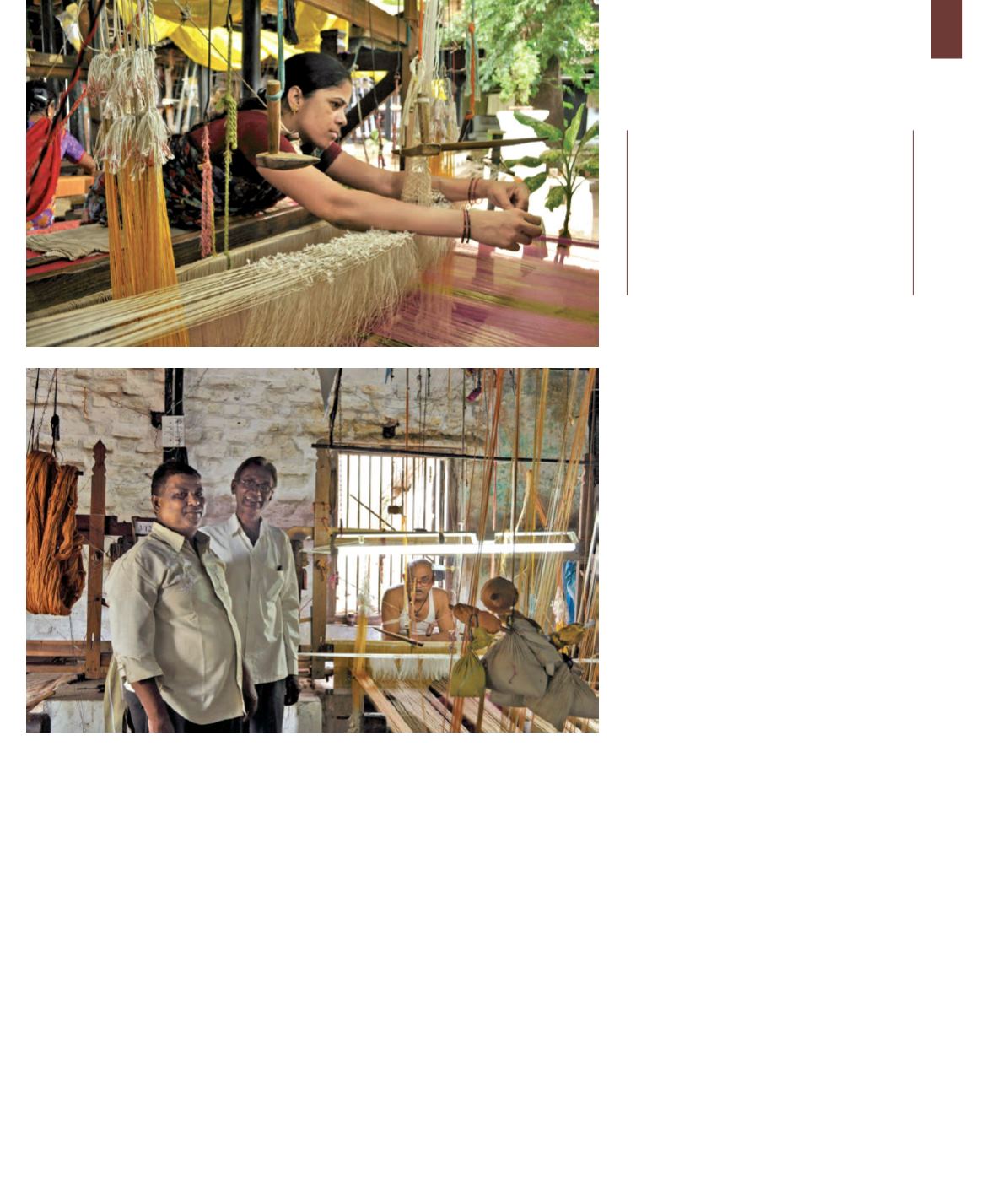
19
to REHWA and perfected our weaving skills
to what they are today. The road was long and
not always easy; but we’ve really grown here in
Maheshwar as a big family of weavers.”
The weavers who share these memories are
mostly women; and they brought with them a
treasure of remembered design, technique and
weaving magic which are now famous borders
like the
Eent, Rui Phool,
and
Bugdi
. These were
pre-REHWA classics. Other borders such as
Hansa, Chameli Phool, Shoba, Mala
were derived
from the skills and imagination of the weavers
and named for the supporters and well-wishers
who came and went during the crucial first two
decades of REHWA’s foundation and growth.
Slowly, through REHWA, Maheshwar’s
handloom story survived and then began
to thrive. The goals were health, education
and housing for weavers. In the eighties, we
built a clinic, a school for weaver’s children
and a colony of brick and mortar homes for
REHWA families. Revati and Vasant Kamath
were the architects for these projects and
their designs blended well with the local
surroundings and have stood the test of time.
Many fine designers contributed to the textile
design bank of REHWA’s evolution. Chelna
Desai (NID) brought hand-block printing from
nearby Bagh into the story, Elana Dickson
(Royal College of Art) brought a whole new
placement of borders and motifs and Shotu
Bannerjee (Central Saint Martins) brought a
wonderfully successful marriage of silk and
12 women for 12 months. We also soon had looms donated by
friends and family and generous marketing support from John
Bissell, founder of
Fabindia
. The looms increased slowly but
steadily; as did the weavers. Markets were followed by unending
exhibitions.
Senior weaver, Bibibai, remembers those pre-REHWA days, “We
used to come to work hungry and had no fuel to cook food. We
would cut some branches ourselves, when we could find them;
but they were always green, so the water never heated enough
to make tea. So, when we walked to the REHWA Centre in the
morning, we brought tiny little meals, whatever was left from last
night’s meal, folded in a leaf and wrapped in the corner of our
sarees or dupattas. It makes us sad; and it also makes us smile
now, when we remember those days.”
“Desperate for work, many of us had trained in weaving at the
Government Centre in Maheshwar. Then, after 1979, we came
Border designs such as
Rui
Phool, Eent, Bugdi
and
Chattai
are all derived from common
elements in the everyday life
of the Maheshwar area and
they have a simple appeal of
their own.


